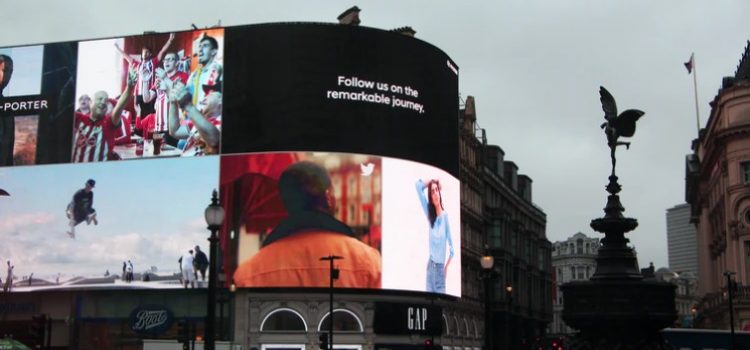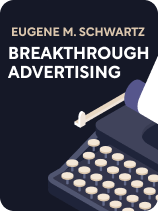

This article is an excerpt from the Shortform book guide to "Breakthrough Advertising" by Eugene M. Schwartz. Shortform has the world's best summaries and analyses of books you should be reading.
Like this article? Sign up for a free trial here.
What is Breakthrough Advertising by Eugene Schwartz about? What are the main takeaways of the book?
The ultimate goal of copywriting is to craft advertisements that spur demand for what you’re selling. In Breakthrough Advertising, Eugene Schwartz says you can do this by understanding what customers already need and framing your product as the only solution to fulfill these needs.
Read below for a brief overview of Breakthrough Advertising by Eugene Schwartz.
Breakthrough Advertising by Eugene Schwartz
In the best-selling classic Breakthrough Advertising, Eugene Schwartz offers timeless advice for crafting persuasive advertisements that convince customers to buy your products.
According to Schwartz, there are two important components in every advertisement: the headline and the copy (the body text of an advertisement). An effective headline captures attention and encourages customers to continue reading. Effective copy builds on and reinforces the message in the headline.
Part 1: Write a Captivating Headline
Schwartz explains what effective headlines are meant to achieve: Capture attention, resonate with customers, and establish the premise that your copy will expand upon. Schwartz then explores the three areas of customer research that will help you target the most relevant customer need, appeal to a specific level of customer awareness, and differentiate your product from what your competitors offer.
Headlines Serve Three Purposes
According to Schwartz, the headline is the first and most important component of the advertisement that you should work on. This is because a headline serves three purposes:
1) It captures attention by making a dramatic statement or inspiring curiosity. For example, “If you don’t read this, you’ll lose $1,000 this year,” or, “The money-saving secret fuel companies don’t want you to know.”
(Shortform note: Research backs up the necessity of provoking interest or stimulating curiosity with your headline: The average attention span is just 8.25 seconds. If you don’t engage people’s attention within this time, they’ll automatically switch their attention to something else and you’ll lose your chance of appealing to them.)
2) It resonates with what customers want and promises to fulfill a specific need. Customers rely on headlines to judge whether the advertisement’s copy is relevant to them and, therefore, worth reading. For example, the headline “Fill your gas tank for half the price,” is highly relevant to budget-conscious car drivers, so they’ll have a good reason to read the rest of the copy. Meanwhile, non-drivers will have little reason to learn more by reading the rest of the copy.
(Shortform note: Charles Duhigg (The Power of Habit) sheds light on why people scan headlines and automatically ignore advertisements that don’t feel relevant to their needs. Your brain seeks out ways to avoid information overload so that it can function efficiently. It achieves this by creating automatic routines and decisions based on what you do or pay attention to most often. These stored patterns allow you to get through your day without having to pause and consciously think about everything you do—they account for more than 40% of your daily decisions and behaviors, including what advertisements you pay attention to.)
3) It establishes the premise that your copy will expand upon. For example, following from the headline above about half-price gas, readers can expect the copy to address how expensive gas is and why this is a bad thing before explaining how to get a cheaper deal.
(Shortform note: Research adds additional insights into how headlines influence a reader’s expectations of the copy: Headlines affect what parts of the copy readers focus on and what information they’re able to recall. A headline frames the copy by drawing attention to certain details or specific points of view that influence the way readers perceive and interpret the text. Because they expect the copy to discuss the content within the headline, they actively seek out the information that supports those details. And, because readers pay more attention to the information that upholds the headline, the details they later recall coincide with the headline’s main theme.)
Schwartz argues that the key to creating a headline that captures attention, resonates with customers, and establishes the premise that your copy will expand upon lies in researching three things about your customers:
- What they want
- How aware they are of your product
- How aware they are of competitive products
Part #2: Write Persuasive Copy
We’ve just mentioned three areas of customer research that will help you craft a compelling headline. The next part of creating an effective advertisement involves writing copy that builds on and reinforces the message in your headline. Schwartz offers four strategies for achieving this:
- Evoke customers’ aspirations
- Explain exactly how your product fulfills their need
- Use endorsements to prove your product’s effectiveness
- Emphasize your product’s superiority

———End of Preview———
Like what you just read? Read the rest of the world's best book summary and analysis of Eugene M. Schwartz's "Breakthrough Advertising" at Shortform.
Here's what you'll find in our full Breakthrough Advertising summary:
- Why the headline is the most important component of an advertisement
- Specific techniques you can use to create captivating headlines
- Persuasive methods you can apply to write compelling copy






